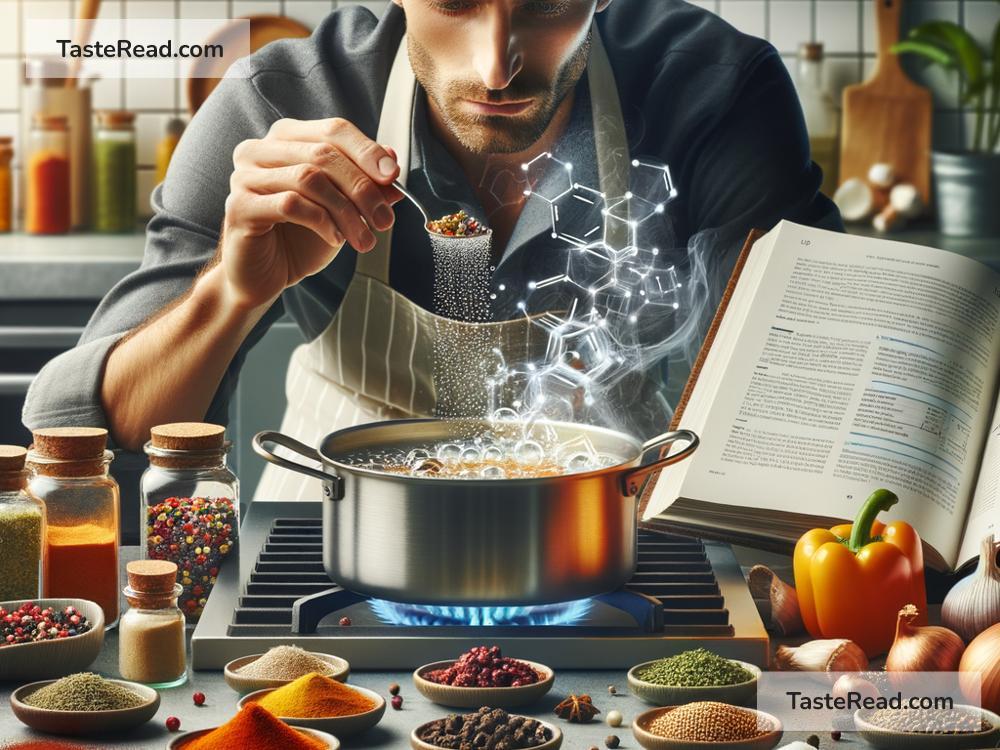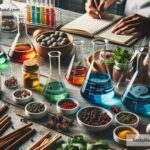The Science of Cooking with Chemical Wisdom: Techniques and Tips
Cooking is not just an art—it’s also a science! When you step into the kitchen, you become part chemist, part artist, and part creator. Every recipe you follow or dish you experiment with is influenced by chemical reactions and physical changes. Understanding the science behind cooking can help you unlock new techniques, improve your dishes, and even reduce kitchen mishaps. In this blog, we’ll explore the science of cooking and share some simple tips to upgrade your cooking game.
The Magic of Heat
At the heart of cooking is heat. Applying heat to food causes physical and chemical changes that transform raw ingredients into delicious meals. Here are some heat-related processes you use every day:
1. Caramelization
Caramelization happens when sugars in food are exposed to heat. When you cook onions, bake cookies, or sear a steak, the sugars break down and brown, creating sweet and complex flavors. To master caramelization, cook foods at moderate heat and give them enough time to develop golden brown edges.
2. Maillard Reaction
While similar to caramelization, the Maillard reaction is all about the interaction between amino acids (proteins) and sugars under heat. It’s what gives grilled meat, toasted bread, and roasted coffee their rich, savory flavors. To maximize the Maillard reaction, cook foods at high temperatures and avoid overcrowding your pan or grill, which traps moisture and prevents browning.
3. Boiling and Evaporation
When water is heated, it reaches the boiling point (typically 100°C or 212°F) and begins to evaporate. This is why soups thicken, sauces reduce, and pasta softens in boiling water. Managing heat while boiling is key, as high heat can make delicate ingredients fall apart.
Chemistry in Everyday Cooking
Cooking is packed with fascinating chemical reactions. Let’s look at a few common processes and ways to optimize them.
1. Leavening Agents: The Science of Rising Dough
Ever wondered how cakes, bread, and pancakes become fluffy and light? Leavening agents like baking soda, baking powder, and yeast create bubbles when exposed to heat or moisture. Baking soda needs an acidic ingredient (e.g., lemon juice, yogurt) to work, while yeast ferments and produces carbon dioxide over time. Knowing how these agents work can help you tweak recipes to suit your needs. For example:
– Baking soda works for quick recipes like cookies.
– Yeast is best for slow-rising bread with a chewy texture.
2. Emulsification: Mixing Oil and Water
Some ingredients naturally don’t mix—like oil and water. Emulsification is the process of breaking down those barriers and blending them together. Mayonnaise, vinaigrettes, and hollandaise sauce rely on emulsification. The secret? Add an emulsifier like mustard or egg yolk into the mix to stabilize the ingredients. When whisking salad dressings, start slowly and keep stirring until the oil and vinegar combine.
3. Protein Folding: Tenderizing Meat
Proteins in food change shape when exposed to heat (a process called denaturation). This can make meat tough if cooked for too long. Tenderizing techniques like marinating, brining, or slow-cooking help proteins stay juicy and flavorful. For instance, soaking a chicken in salted water breaks down protein bonds and keeps the meat moist.
Simple Kitchen Tips with Chemical Wisdom
Now that you understand some basic cooking science, here are tips to level up your kitchen skills!
Tip 1: Salt is More than a Seasoning
Salt doesn’t just make food taste better—it also influences how ingredients behave. Add salt early when boiling water for pasta; it enhances flavor and raises the boiling point of water. Salt also draws out moisture, so sprinkling it on vegetables before roasting helps them brown evenly.
Tip 2: Acids Brighten Dishes
Lemon juice, vinegar, and other acidic ingredients bring a fresh, tangy taste to your dishes. Acids can also tenderize meat and preserve colors in fruits and vegetables. For example, adding a squeeze of lemon to guacamole prevents browning.
Tip 3: Control Your Heat
Different cooking techniques require different levels of heat. High heat is great for searing, but use low and slow cooking methods for delicate dishes like custards or stews. Invest in a good thermometer to measure your stove or oven’s temperature accurately.
Tip 4: Don’t Overcrowd the Pan
Ever tried frying veggies only to end up steaming them? Overcrowding the pan traps moisture and prevents browning. To give foods enough room for caramelization or the Maillard reaction, cook in batches and use large pans.
Tip 5: Experiment and Learn
Cooking is a trial-and-error process. If a recipe doesn’t turn out right, revisit the science behind it. Was the temperature too low? Did you skip a key ingredient? With a little knowledge and practice, you’ll master the techniques over time.
Conclusion
Cooking with chemical wisdom is about understanding the fascinating transformations that happen in your kitchen. Whether you’re searing a steak, baking bread, or simmering soup, science is your trusty sidekick. By learning the principles behind caramelization, emulsification, and tenderizing, you can improve your dishes and explore new recipes with confidence.
So next time you’re cooking, take a moment to appreciate the science behind your ingredients—and remember that the real magic is in the chemistry of your food. Happy cooking!


